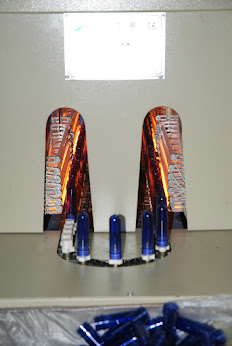
Composition Of Plastic
Plastic is the largest class of polymer materials. It is a material with high polymer as the main component and can have fluidity at a certain stage of processing into a finished product.
Polymers are high molecular compounds, which refer to those compounds with a molecular weight of more than 10,000 composed of many atoms or atomic groups that are mainly bonded by covalent bonds.
Resin is a kind of polymer compound, which is divided into natural resin and synthetic resin. Whether it is natural resin or synthetic resin, they all belong to high molecular polymer, referred to as high polymer.
In fact, the main components of plastics are various resins, and resin is a kind of polymer, but plastics and polymers are different, and the pure polymer properties often cannot meet the requirements of processing and actual use. It is not used alone, and it has value in industry only after adding additives. Therefore, plastics are made of synthetic resin as the main component, and then various other additives (also called auxiliaries) are added.
Synthetic resin determines the basic properties of plastic products. Its function is to bond various additives into a whole. The additives are some substances added to improve the molding process performance of plastics, improve the performance of products or reduce costs, such as fillers, plasticizers, lubricants, stabilizers, etc. Colorants, etc.

(1) Synthetic resin (polymer)
Resin is a high molecular organic compound, which is characterized by no obvious melting point, gradually softens after being heated, and can be dissolved in organic solvents, but not in water. Resin is divided into natural resin and synthetic resin. Whether it is natural resin or synthetic resin, they all belong to high molecular polymer, referred to as high polymer.
Natural resins refer to resins secreted from trees, such as rosin; resins extracted from the secretions of tropical insects, such as shellac; and some resins obtained from petroleum, such as asphalt, which are all natural resins.
Since natural resins are far from meeting the needs of real production and life in terms of quantity and quality, synthetic resins are manufactured by artificial methods according to the molecular structure and characteristics of natural resins.
Synthetic resin is a polymer compound obtained by chemical synthesis of simple organic substances or by chemical reaction of some natural products, also known as polymer. For example, phenolic resin, epoxy resin, polyethylene, polyvinyl chloride, etc. are all synthetic resins. Synthetic resins not only retain the advantages of natural resins, but also improve the molding process ability and performance.
Therefore, the plastics currently used are generally made of synthetic resins, and natural resins are rarely used. Petroleum is the main raw material for producing synthetic resins.
Synthetic resin is the main component of plastic, it determines the type and basic properties of plastic (such as thermal properties, physical properties, chemical properties, mechanical properties, etc.), it connects or adheres to other components, and makes plastic plasticity and fluidity, So as to have formability.
(2) Fillers Fillers, also known as fillers, are important but not essential components in plastics. Fillers are mechanically mixed with other components in the plastic, they do not chemically interact with each other, but are firmly glued to the resin.
There are two functions of fillers in plastics: one is to reduce the amount of resin and reduce the cost of plastics; the other is to improve certain properties of plastics and expand the application range of plastics. In many cases, fillers play a very important role. For example, adding wood powder to resins such as polyethylene and polyvinyl chloride can not only overcome its brittleness, but also reduce costs. Using glass rose fiber as a filler for plastics can greatly improve the mechanical properties of plastics, while using asbestos as a filler can improve the heat resistance of plastics. Some fillers can also make plastics have properties that resins do not have, such as electrical conductivity, magnetic permeability, and thermal conductivity.
Commonly used fillers are wood flour, pulp, mica, asbestos, glass fiber, etc.
(3) Plasticizer
Some resins (such as nitrocellulose, acetate fiber, polyvinyl chloride, etc.) have little plasticity and poor flexibility. In order to reduce the melt viscosity and melting temperature of the resin, improve its molding performance, and improve the flexibility and elasticity of plastic parts And various other necessary properties, usually adding high-boiling organic compounds that are compatible with resin and non-volatile, such substances are called plasticizers
After the plasticizer is added to the resin, the plasticizer molecules are inserted between the polymer chains of the resin, which increases the distance between the polymer chains, thus weakening the force between the polymers and making the resin polymers easy to produce. Relative slippage, so that the plastic has good plasticity and softness at lower temperatures. For example, adding dibutyl phthalate to polyvinyl chloride resin can turn it into a soft plastic like rubber.
While adding plasticizer to improve the plastic molding processing performance, it also sometimes reduces some properties of the resin, such as hardness, tensile strength, etc. Therefore, the amount of plasticizer should be added.
Requirements for plasticizers: good compatibility with resins; low volatility, not easy to be precipitated from plastic parts, non-toxic, colorless, and odorless; relatively stable to light and heat; non-hygroscopic.
(4) Colorants
In order to obtain various desired colors of plastic parts, colorants are often added to plastic components. There are many kinds of colorants, but they are generally divided into three categories: organic pigments, inorganic pigments and dyes. Some colorants have other functions. For example, natural polyoxymethylene plastics are colored with carbon black to help prevent photoaging to a certain extent.
The general requirements for colorants are: strong tinting strength; good compatibility with resins; no chemical reaction with other components in the plastic; no decomposition and discoloration due to changes in temperature and pressure during the molding process, and long-term plastic parts. It can remain stable during use.
(5) Stabilizer
In order to prevent or inhibit the performance changes caused by external factors (such as heat, light, oxygen, body lines, etc.) during the molding, storage and use of plastics, that is, the so-called "aging", it is necessary to add some plastic to the polymer. Substances that stabilize their chemical properties are called stabilizers.
The requirements for the stabilizer are: water resistance, oil resistance, chemical resistance, good compatibility with resins, no decomposition during molding, small volatilization, and colorless.
Stabilizers can be divided into heat stabilizers, light stabilizers, antioxidants, etc. Commonly used stabilizers are stearate lead compounds, epoxy compounds and the like.
(6) Curing agent Curing agent is also called hardening agent and cross-linking agent. When molding thermosetting plastics, the synthetic resin with linear polymer structure needs to undergo a cross-linking reaction to transform into a bulk polymer structure. The purpose of adding the curing agent is to promote the crosslinking reaction. Such as adding ethylenediamine, triethanolamine, etc. to epoxy resin.
(7) Other additives
In addition, some other additives can also be added to the plastic, such as foaming agents, flame retardants, antistatic agents, conductive agents and magnetic permeability agents. For example, flame retardants can reduce the flammability of plastics; hair curing agents can be made into foamed plastics; antistatic agents can make plastic parts have the right amount of electrical conductivity to eliminate the phenomenon of static electricity. Not every type of plastic needs to add all these additives, but some additives are selectively added as needed according to the type of plastic and the use requirements of plastic parts.
Author : David Yang
Rongdar is a young plastic package bottle manufacturer since 2007,who is devoted to package bottle production,Injection blow,extrusion blow mould designer and package solution supplier. www.rongdar.com
Rongdar (China )
E-mail:info@rongdar.com
Phone:8615000928169
Whatsapp:8615000928169
www.rongdar.com
Add: Cangzhou City, Hebei province,China .